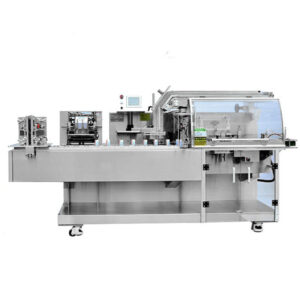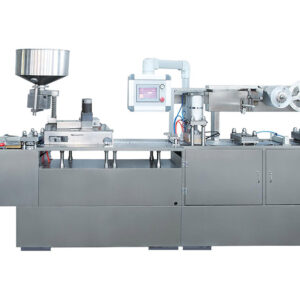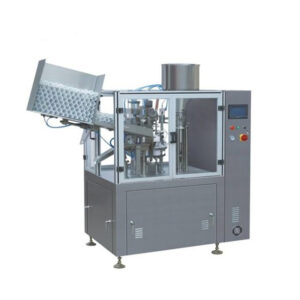Description
| Parameter | Description |
|---|---|
| Capacity | The volume of liquid the tank can hold |
| Material | Construction material (e.g., steel, plastic, etc.) |
| Diameter | Width of the tank |
| Height | Height of the tank |
| Weight | Empty weight of the tank |
| Maximum Operating Pressure | Maximum pressure the tank can withstand |
| Operating Temperature | Temperature range for safe operation |
| Design Standards | Standards the tank complies with (e.g., API, ASME, etc.) |
| Coating/Insulation | A protective coating or insulation material |
| Inlet/Outlet | Connection size and type for filling and draining |
| Accessories | Additional features or accessories (e.g., valves, level indicators, etc.) |
| Certification | Compliance with regulatory standards (e.g., ISO certification) |
| Maintenance Requirements | Recommended maintenance schedule and procedures |
| Warranty | Length and terms of warranty |
In the pharmaceutical industry, liquid storage tanks play a critical role in maintaining the integrity and stability of various substances used in drug manufacturing. These tanks are designed to store a wide range of liquids such as raw materials, intermediates, and finished products. Knowing the types, working processes, applications, functions, benefits and future trends of pharmaceutical liquid storage tanks is very important for assuring the quality and safety of pharmaceutical products. This article gives an all-inclusive overview of pharmaceutical liquid storage tanks and their significance in the pharmaceutical industry.
Types of Pharmaceutical Liquid Storage Tanks
There are different forms of pharmaceutical liquid storage tanks that are designed according to specific requirements for storage and have to meet certain industry standards. Some common kinds among them include:
Stainless Steel Tanks: Stainless steel tanks have been widely used by the pharmaceutical industry due to corrosion resistance properties against different chemicals, durability & ease of cleaning. They can be utilized for storing a variety of liquids like water solvents bases acids etc.
Glass-Lined Tanks: Glass-lined tanks possess great resistance to corrosion as well as contamination because they have been provided with an internal tank that is coated with glass. From this point, one can see that these types of tanks are usually used for keeping pure pharmaceutical agents which can be affected by even small impurities.
Polyethylene Tanks: Polyethylene tanks are lightweight, cost-effective, and chemical resistant. Their commonly stored non-hazardous drugs examples include Aqueous solutions purified water etcetera.
Fiberglass Reinforced Plastic (FRP) Tanks: FRP tanks are characterized by high strength along with corrosion resistance properties; hence characterized by a lightweight nature. Examples include alkalis acids and organic solvents amongst other varied categories of pharmaceutical liquids.
Working Processes of Pharmaceutical Liquid Storage Tanks
The working processes involved in handling or operating any form or kind or type or make or model of a pharmaceutical liquid storage tank have several crucial steps towards safely preserving all possible kinds/groups/forms of pharmaceutical liquids:
Design and Installation: During the design and installation of pharmaceutical liquid storage tanks, compliance with industry standards and regulations concerning safety and regulation is observed. Factors such as tank material, capacity, and configuration are carefully considered during the design phase.
Loading and Unloading: Pharmaceutical liquids are loaded into storage tanks and unloaded out of them using specialized tools like pumps hoses or valves. Attention is taken to eliminate contamination so that the stored fluids can be kept intact.
Monitoring and Control: There are instruments as well as control systems inside these pharmaceutical liquid storage tanks that monitor aspects like temperature, pressure, and liquid level among others. Automated control systems help maintain optimal storage conditions and prevent accidents or spills.
Cleaning & Maintenance: To ensure that the drugs inside remain untainted while within their respective containers, regular cleaning & maintenance exercises must be carried out on these materials. These procedures may include rinsing the container with a cleaning agent, surface sanitization as well as checking for signs of corrosion or damage.
Applications Of Pharmaceutical Liquid Storage Tanks
Pharmaceutical liquid storage tanks have uses in various drug manufacturing stages including distribution at which part?
Raw Material Storage: Before they are used in the manufacturing process itself it has been common to store pharmaceutical raw materials such as solvents, reagents excipients, etc in the form of liquids within containers known to us as storage tanks.
Intermediate Storage: This includes reaction mixtures that are generated during manufacturing processes &process intermediates being temporarily preserved in liquid storage tanks where they’re then further processed for other purposes.
Storage of the final product: These include; syrups, suspensions, and injectables. They are stored in liquid form before they are packaged and distributed to consumers.
Storage of Bulk Drugs: Large quantities of active pharmaceutical ingredients (APIs) or drug formulations are held in large liquid storage tanks before being converted into final dosage forms.
Objectives of Pharmaceutical Liquid Storage Tanks
Some of the functions that pharmaceutical liquid storage tanks perform in the pharmaceutical industry include:
Product integrity preservation: The purpose of using these is to protect liquid products for pharmaceuticals from spoilage, pollution, and other adverse circumstances by providing a regulated environment for storing them.
Meeting Regulatory Requirements: Pharmaceutical liquid storage tanks follow the guidelines given by regulatory bodies such as GMP which include making sure that drugs have no contamination, no adulteration or dilution and they remain effective till their expiry date.
Managing Inventory: These provide a central location for all types of liquids used in the production process including quick access to required materials, monitoring available stocks as well as an easy way to report back on any changes made in inventory levels among others.
Reducing Risk: Properly designed and maintained pharmacological fluid storage units. This helps prevent risks such as product loss, contamination, and environmental hazards thus ensuring safe working conditions for employees inside these facilities and surrounding areas.
Advantages Of Pharmaceutical Liquid Storage Tanks
Pharmaceutical industries benefit from using this technology because;
Improving Product Quality: Through regulated environments for keeping drugs ready for use, containers also help maintain quality assurance through stability-preserving attributes such as purity’s intactness which guarantees high-quality medicines at all times.
Enhancing Effectiveness: By allowing for efficient handling, stocking up, and dispensing operations when it comes to medicinal fluids; these minimize human errors during manual operations thereby minimizing losses associated with these mistakes while accelerating manufacturing processes at once.
Reducing Cost: A well-built tank can be used over long periods without any waste being incurred from damages due to breakdowns and it also ensures that inventory is kept at optimum levels resulting in cost savings for pharmaceutical manufacturers.
Meeting Regulatory Requirements: Complying with the storage and handling requirements of pharmaceutical products is important for maintaining licenses and certifications by pharmaceutical manufacturers; a role that liquid storage tanks play effectively.
Future Trends in Liquid Pharmaceutical Storage Tanks
The future outlook of the pharmaceutical manufacturing industry, regarding its use of liquid storage tanks, is shaped by several developing trends which include;
Automation and Digitalization: Progressing automation as well as digital technologies have seen the emergence of intelligent sensors, real-time monitoring systems as well as predictive analytics embedded into these tanks hence making them more reliable and efficient during their operations.
Sustainable Solutions: In line with the pharma industry’s focus on sustainable practices, there has been the development of eco-friendly materials, energy-efficient designs, and recycling programs for containment or vessels among other related initiatives to reduce waste.
Modular and Scalable Designs: These make it possible for drug producers to match their operations with evolving circumstances by scaling up or down depending on business needs while optimizing space utilization within the facility through flexible design principles employed in setting up physical infrastructure like equipment layout.
Integration with Industry 4.0: As part of Industry 4.0 initiatives such as the Industrial Internet of Things (IIoT), cloud computing, and artificial intelligence, interconnected manufacturing systems are being created where liquid storage tanks form an integral part of this revolutionized factory environment.
Maintenance along with Training Standards on Pharmaceutical Liquid Storage Tanks
To ensure the safe and effective operation of these units the following should be observed:
Routine Inspections: By conducting frequent inspections on liquid vessels some common issues can be noted such as wear-out signs which would eventually affect tank integrity leading to contamination problems or poor-quality drugs.
Preventive Maintenance: Preventive maintenance is scheduled and performed to prevent equipment failure, extend equipment life span, and ensure adherence to regulations through activities such as cleaning, calibration, and servicing.
Operator Training: Full training programs are organized for operators responsible for operating and maintaining liquid storage tanks so that they can learn how the machinery functions, the safety rules that govern the plants, and regulatory requirements.
Emergency Response Preparedness: Staff is educated on spill containment techniques and evacuation plans including leak detection in the event of an emergency. This prepares them in case of any accidents or incidents occurring with liquid storage tanks.
FAQs
- What are pharmaceutical liquid storage tanks?
These are special containers set aside specifically for storing a range of fluids used during the drug manufacturing process which include raw materials among others.
- What materials are commonly used to manufacture pharmaceutical liquid storage tanks?
Commonly employed substances for pharmaceutical liquid storage tanks include stainless steel, glass-lined steel, polyethylene, and FRP (fiberglass-reinforced plastic). Materials selected depend on the type of chemical stored within the tank for example safety reasons as well as statutory provisions.
- What are the main functions of pharmaceutical liquid storage tanks?
Preserving integrity and stability of stored liquids; Assuring compliance with regulatory requirements; Facilitating inventory management; Minimizing risks such as product contamination or loss.
- What are the different types of pharmaceutical liquid storage tanks?
Pharmaceutical liquid storage tanks come in various types including stainless steel ones along with glass-lined ones while there also exists polyethylene ones together with FRP (fiberglass reinforced plastic) ones. Each type has its advantages regarding corrosion resistance, durability, and cost-effectiveness.
- How are pharmaceutical liquid storage tanks cleaned and maintained?
Cleaning procedures involve flushing with cleaning agents after which the interior surfaces are sanitized to avoid contamination thereby preventing it from leaving. The inspection process itself includes preventive maintenance operations including tank cleaning plus calibration. Routine operator training may also be included by these companies too into this process like preventive maintenance.
- What safety measures should be taken when operating pharmaceutical liquid storage tanks?
This may involve wearing the required personal protective equipment, following standard operating procedures (SOPs), and implementing emergency response protocols by ensuring regular safety audits are done. These policies will ensure that pharmaceutical liquid storage tanks operate safely as well.
- What are the regulatory requirements for pharmaceutical liquid storage tanks?
Regulations concerning pharmaceutical liquid storage tanks differ depending on the location of the facility and the type of chemicals being held but some common rules include Good Manufacturing Practices (GMPs), Occupational Safety and Health Administration (OSHA) standards, and environmental regulations among others.
- How are pharmaceutical liquid storage tanks monitored and controlled?
Temperature, pressure, and level of fluids in such containers as – those used to store medicines or biological matter – can be measured using instruments linked up through control systems. Automation helps to maintain suitable operating conditions thereby preventing spills in these places.
- What are the benefits of using pharmaceutical liquid storage tanks?
Benefits arising from the use of pharmaceutical liquid storage facilities include better product quality, more efficient handling, and warehousing, cost efficiencies through reduced wastage as well as compliance with prescribed industry practices.
- What are the future trends in pharmaceutical liquid storage tank technology?
Future trends in the drug manufacturing sector will entail automation & digitization; sustainable design options; modular scalable designs; and integration with Industry 4.0 initiatives which include IIoT(Internet Of Things) & AI(Artificial Intelligence). The goal is to enhance efficiency, sustainability, and safety in the production processes for drugs.





Reviews
There are no reviews yet.